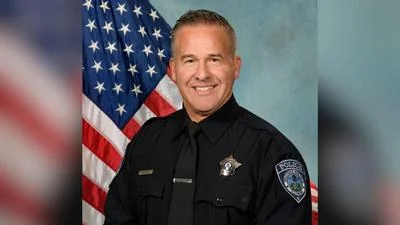Surface Transportation Board Chairman Martin Oberman | Surface Transportation Board
Surface Transportation Board Chairman Martin Oberman | Surface Transportation Board
On Wednesday, March 15, the Federal Surface Transportation Board approved the requested merger between the Canadian Pacific Railway and the Kansas City railway.
This $31 billion merger will create the first transcontinental railroad that runs from Canada, through the U.S., all the way into Mexico. Its headquarters will be located in Calgary, Alberta, with U.S. headquarters in Kansas City, Mo. The merger will be effective April 14, and will affect much of the Chicago area and communities along the Mississippi.
The Surface Transportation Board held its first-ever press conference Wednesday, explaining its decision. Board Chairman Martin Oberman said the board wanted to be as transparent and honest as it could be in explaining its decision. He said the board remains committed to protecting the interests and welfare of all citizens in the nation. He explained several safety factors that they imposed on the merger as conditions for the approval.
He said it made the decision because it expects increased railroad competition, noting that even after the merger, the railway will still be one of the smallest Class I railways, and it could also remove tens of thousands of truckload shipments off of the roads each year.
At the press conference, Oberman stressed safety.
"I want to talk about safety and the environment for a moment. It’s no secret, and we are well aware of the very real and legitimate public concern over rail safety," Oberman said. "It’s always been there, but certainly has come to the fore as a result of the derailment in East Palestine. And we’ve heard, from many people, members of Congress, concerned citizens, people fearful for their own neighborhoods. Now in fact, it is a routine part of the board’s consideration of rail acquisition to review the safety aspects of the transaction."
Oberman said safety was always under consideration.
"So we were already well underway in reviewing, documenting, measuring, what the safety aspects of the transaction are," Oberman said. "If there is a problem in this country about the safe transportation of hazardous materials on rail, and there is some problem obviously, safety can and always must be improved, and zero accidents should be what we strive for, it is a problem nationwide. It is not a problem caused by or resulting from this merger. In fact, to the extent hazardous materials can be moved on rail as opposed to highways, we are better off the more of that traffic that can be moved to rail."
Affected communities have long been opposed to the merger, fearing the impact of greater traffic and environmental risks associated with a busier railroad line. Several state representatives from all over the country also opposed the merger, asking for delays in the decision after the East Palestine derailment so that they could create better safety systems and do more in-depth environmental impact studies.
A collection of communities and leaders in the DuPage and northern Chicago area created a coalition opposing the merger. They said they do not want the increase in freight traffic that this will bring through their communities, with some towns seeing triple the daily amount of traffic as before. Some communities, like Roselle, have been fighting this for over a year, sending over 150 messages to federal representatives and the rail companies expressing their concerns.
The railway's routes will run from Vancouver through much of Canada into North Dakota, Minnesota, and into Milwaukee, where it will run through the Chicago area before cutting west along the eastern side of Iowa into Kansas City.
Some lines will also come from Toronto into Detroit and along the southern Michigan border before entering into Chicago. From Kansas City the lines flow south along the Mississippi River and the southeastern edge of Texas before entering Mexico. The connection also opens up the possibility for Amtrak passenger trains from Canada to Mexico in the future.






 Alerts Sign-up
Alerts Sign-up